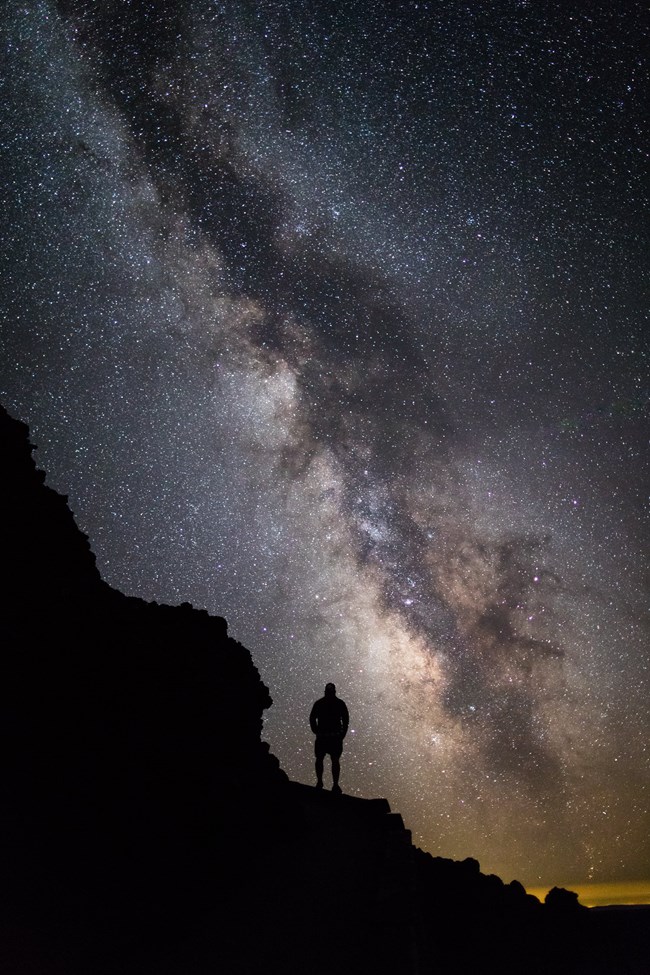Part of a series of articles titled Southern Idaho National Parks Newspaper: Summer 2020.
Article
Visiting Craters of the Moon National Monument & Preserve

NPS Photo / David Hunter
"A weird and scenic landscape, peculiar to itself" is how President Calvin Coolidge described the area when he established the monument in 1924. Since that time four different presidents have expanded the boundary including a major expansion “to assure protection of the entire Great Rift volcanic zone” in 2000. Craters of the Moon continues to be a strange and wonderful place that inspires lasting impressions.
Craters of the Moon National Monument and Preserve contains three young lava fields formed by volcanic eruptions originating from a 52-mile long tear in the earth’s crust known as the Great Rift. The Great Rift, the deepest known land-based open volcanic rift in the world, provided a conduit for lava to reach the surface during eight major eruptive periods beginning 15,000 years ago and continuing until only 2,000 years ago. The resulting volcanic features appear to have happened yesterday and will likely continue tomorrow.

NPS Photo / Jacob W Frank
The combination of harsh, young volcanic terrain and the extremes of a high desert climate have produced a diversity of habitats where plants and animals display remarkable adaptations that allow them to survive and thrive here. In recognition of the wild and undisturbed nature of the area, Congress designated a portion of Craters of the Moon as Wilderness in 1970, one of the first such designations in the National Park Service. In recognition of Craters of the Moon's outstanding night skies and staff efforts to preserve and enhance them, the park received a new honor in 2017 when it was designated an International Dark Sky Park.
Start at the visitor center for information and friendly advice for exploring the park. Just past the visitor center, visitors can access the campground and the scenic 7-mile Loop Road. Here you can explore trails of varying lengths, gaping craters, and steep-sided spatter cones. Entrance and camping fees help to pay for improvements to park facilities such as the new fully accessible North Crater Flow Trail— thank you!
For thousands of years, people have endured and pondered this landscape. As we approach the park's centennial in 2024, consider how your visit here is part of a legacy of people who have shared the responsibility of taking care of this special place.
For information on temporary closures and modifications to operations, please visit the Current Conditions page.
For additional trip-planning information, visit Craters of the Moon's website.
Last updated: December 15, 2023
